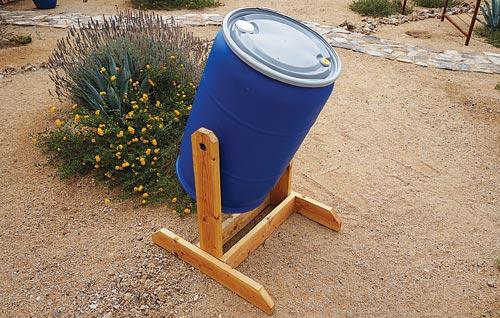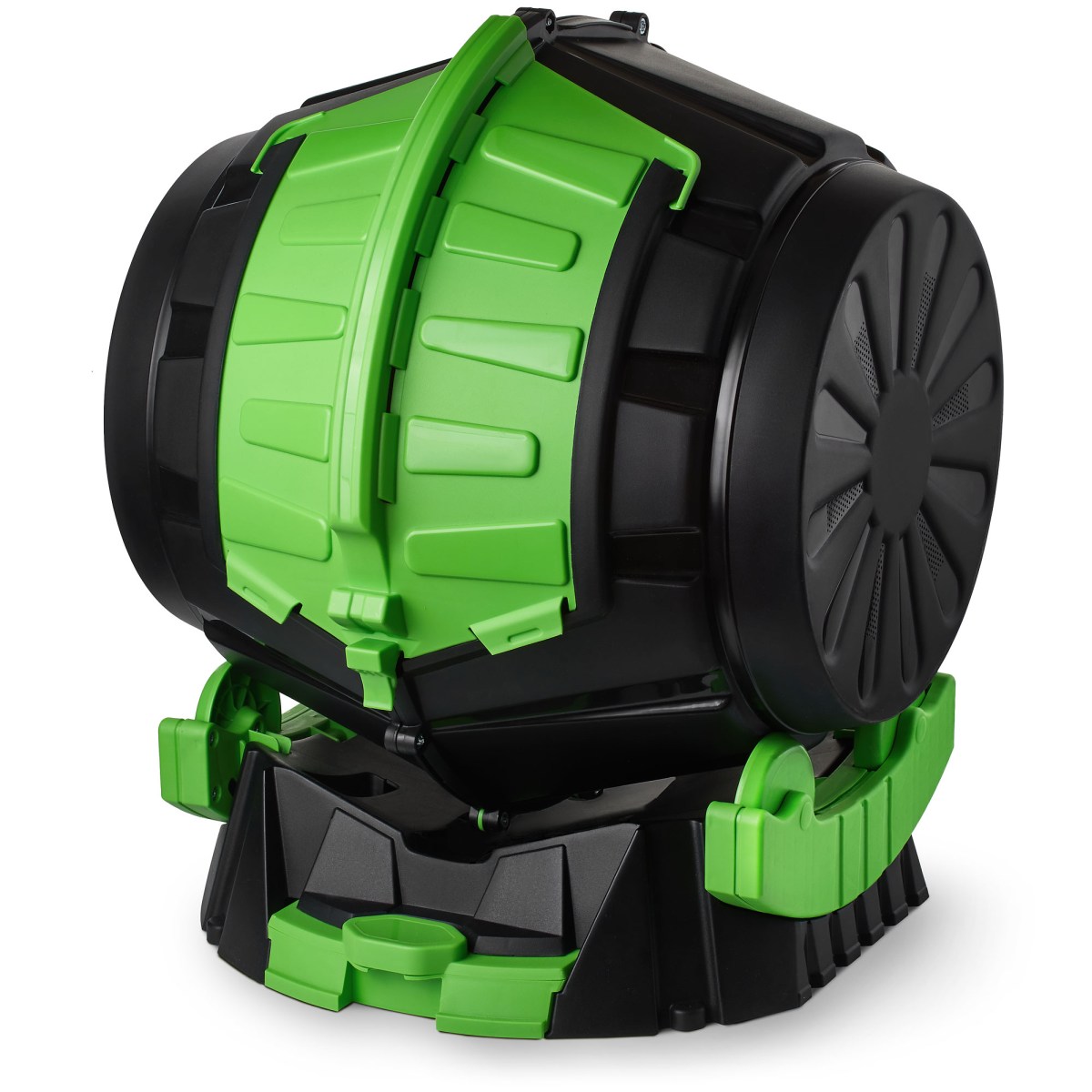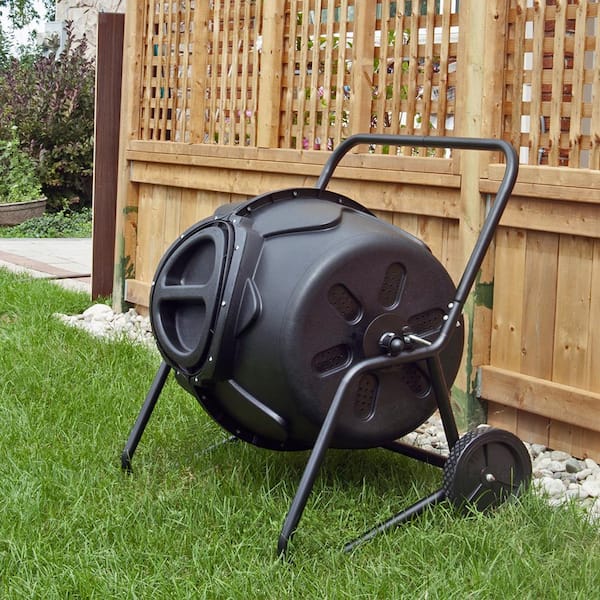How To Make Compost With A Lifetime Compost Tumbler In Days Or Less
Composting is a great way to reduce your environmental impact, save money on fertilizer, and improve the health of your soil. And with a Lifetime Compost Tumbler, you can make compost in as little as 7 days!
A compost tumbler is a closed container that helps to speed up the composting process. It does this by providing a controlled environment with the right amount of moisture, oxygen, and heat.
To make compost in a Lifetime Compost Tumbler, you will need:
- A Lifetime Compost Tumbler
- Green materials (such as vegetable scraps, fruit scraps, coffee grounds, and tea leaves)
- Brown materials (such as dead leaves, shredded paper, and wood chips)
- Water
Instructions
- Fill the bottom of the compost tumbler with a layer of brown materials.
- Add a layer of green materials.
- Continue alternating layers of green and brown materials until the compost tumbler is about two-thirds full.
- Add water until the compost is moist but not soggy.
- Close the lid of the compost tumbler.
- Turn the compost tumbler every 2-3 days. This will help to aerate the compost and speed up the decomposition process.
- In 7-10 days, your compost should be ready to use!
Tips for Making Compost in a Lifetime Compost Tumbler
- For best results, use a variety of green and brown materials. This will help to create a balanced compost that is rich in nutrients.
- Shred your green and brown materials before adding them to the compost tumbler. This will help to speed up the decomposition process.
- If you live in a cold climate, you may need to add a compost heater to your tumbler. This will help to keep the compost warm and active during the winter months.
- Keep an eye on the moisture level of your compost. It should be moist but not soggy. If it is too dry, add some water. If it is too wet, add some brown materials.
- Turn the compost tumbler every 2-3 days. This will help to aerate the compost and speed up the decomposition process.
- Once your compost is finished, you can use it to fertilize your plants. It is a great way to improve the health of your soil and reduce your environmental impact.
Conclusion
Making compost with a Lifetime Compost Tumbler is a simple and easy way to reduce your environmental impact, save money on fertilizer, and improve the health of your soil. With a little effort, you can have compost ready to use in just 7-10 days!
Are you looking for a way to reduce your environmental impact and save money on fertilizer? If so, a compost tumbler is a great option. Compost tumblers are easy to use and can be placed in any backyard, even if you don't have a lot of space.
The Lifetime Compost Tumbler is a top-rated model that is made from durable materials and comes with a lifetime warranty. It has a large capacity of 80 gallons, so you can compost all of your food scraps and yard waste. The tumbler also features a rotating design that helps to aerate the compost and speed up the decomposition process.
To learn more about the Lifetime Compost Tumbler, visit Home Gardening. You can also read customer reviews and watch videos to see how it works.
FAQ of lifetime compost tumbler
Here are some of the most frequently asked questions about the Lifetime compost tumbler, along with some valuable insights and solutions:
- What are the benefits of using a Lifetime compost tumbler?
The Lifetime compost tumbler is a great option for people who want to start composting but don't have a lot of space. It's also a good choice for people who live in apartments or small homes, as it can be easily stored indoors when not in use. The tumbler is made from durable materials that can withstand the elements, and it has a rotating design that helps to aerate the compost and speed up the decomposition process.
- How do I use a Lifetime compost tumbler?
To use a Lifetime compost tumbler, simply add your food scraps, yard waste, and other compostable materials to the bin. You can then rotate the bin to mix the materials together and aerate the compost. The compost should be ready to use in about 6-8 weeks, but you can start using it sooner if you need to.
- What materials can I compost in a Lifetime compost tumbler?
You can compost a variety of materials in a Lifetime compost tumbler, including:
Food scraps: This includes vegetable scraps, fruit scraps, coffee grounds, tea bags, and eggshells.
Yard waste: This includes grass clippings, leaves, weeds, and wood chips.
Other compostable materials: This includes shredded paper, cardboard, and sawdust.
What materials should I not compost in a Lifetime compost tumbler?
There are a few materials that you should not compost in a Lifetime compost tumbler, including:
Meat and dairy products: These materials can attract pests and can also make the compost smell bad.
Grease and oil: These materials can make the compost anaerobic, which can slow down the decomposition process.
Pet waste: This material can contain harmful bacteria that can contaminate the compost.
Diseased plants: These plants may contain harmful pathogens that can spread to other plants.
How often should I turn the compost in my Lifetime tumbler?
You should turn the compost in your Lifetime tumbler every 1-2 days to help aerate it and speed up the decomposition process. You can turn the tumbler by hand or by using a crank.
- How long does it take for compost to mature in a Lifetime tumbler?
The amount of time it takes for compost to mature in a Lifetime tumbler depends on a number of factors, including the type of materials you are composting, the amount of moisture in the compost, and the temperature. In general, compost can be ready to use in about 6-8 weeks, but it may take longer if you are composting a lot of woody materials or if the weather is cold.
- How do I know when my compost is ready?
When your compost is ready, it will have a dark brown or black color and a crumbly texture. It will also have a pleasant, earthy smell. If your compost is still green or slimy, it is not yet ready to use.
Image of lifetime compost tumbler
- Vertical compost tumbler: This type of tumbler is tall and narrow, and it can be rotated vertically. This makes it a good option for small spaces, as it can be placed against a wall or in a corner.

- Horizontal compost tumbler: This type of tumbler is wide and short, and it can be rotated horizontally. This makes it a good option for larger spaces, as it can be placed in a more open area.

- Double-bin compost tumbler: This type of tumbler has two bins, which allows you to compost two batches of material at the same time. This can be a helpful option if you have a lot of food scraps or yard waste to compost.

- Tumbling barrel composter: This type of tumbler is made of a barrel-shaped container that can be rotated to mix the composting materials. This type of tumbler is typically made of plastic or metal, and it can be either free-standing or mounted on a stand.

- Aerated compost tumbler: This type of tumbler has holes or vents in the sides of the container, which allows air to circulate and help the composting process. This type of tumbler can be a good option for cold climates, as the airflow helps to keep the compost warm.

- Wooden compost tumbler: This type of tumbler is made of wood, which is a natural and sustainable material. Wooden compost tumblers are typically more expensive than plastic or metal tumblers, but they can last for many years.

- DIY compost tumbler: If you are handy, you can build your own compost tumbler. There are many plans available online, and you can use materials that you may already have on hand.

- Compost tumbler with a lid: A compost tumbler with a lid can help to keep pests out of your compost. This is especially important if you are composting food scraps.
- Compost tumbler with wheels: A compost tumbler with wheels can make it easier to move the tumbler around your yard. This can be helpful if you need to move the tumbler to a sunnier spot or to a different location for the winter.

- Compost tumbler with a thermometer: A compost tumbler with a thermometer can help you to monitor the temperature of your compost. This can be helpful in ensuring that your compost is composting properly.

Post a Comment for "How To Make Compost With A Lifetime Compost Tumbler In Days Or Less"